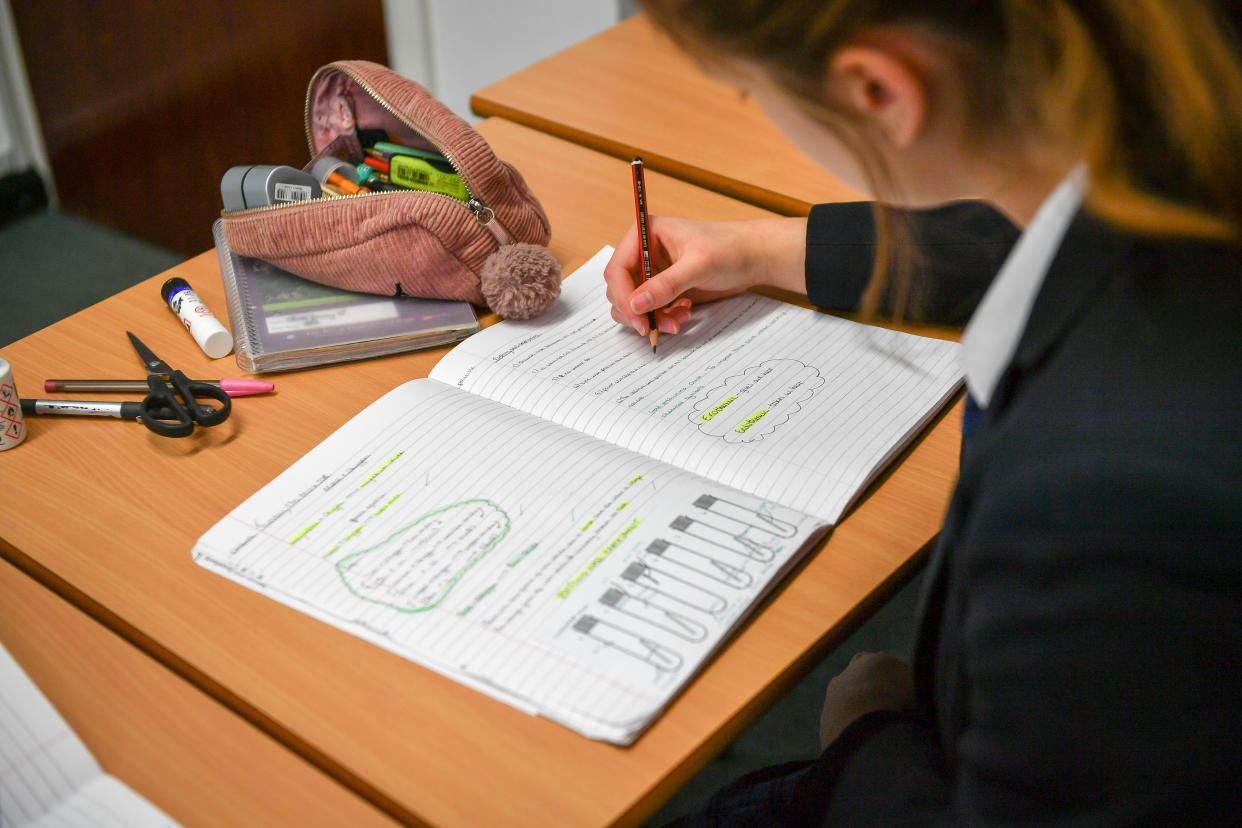Coronavirus: Five key sentences from scientists’ advice on reopening schools

The government’s top scientists have released advice on the planned reopening of schools next month.
Boris Johnson and his government want Reception, Year 1 and Year 6 classes in England to return on 1 June at the earliest.
In its new report on relaxing school closures during the coronavirus lockdown, the government’s Scientific Advisory Group for Emergencies (SAGE) did not make an outright recommendation – adding to the uncertainty over whether the 1 June reopening will happen.
However, there were a number of important pieces of information in the report. Yahoo News picks out five key sentences…
Risk in children ‘inconclusive’
“Evidence remains inconclusive on both the susceptibility and infectivity of children, but the balance of evidence suggests that both may be lower than in adults.”
The advice will not appease teaching unions which have been protesting against the reopening plans on health and safety grounds.
Chance of increased transmission…
“Although some scenarios for relaxing school closures may have a small relative impact, this will need to be considered within the wider context – that is, if the current reproduction number is only just below 1, then even a small change could lead to a return to exponential growth.”
The so-called “R” or reproduction number is currently between 0.7 and 1. If the R is 1 or higher, the virus will spread exponentially through the population. An R number of less than 1 indicates the virus is in decline.
…but schools are a small part of a bigger picture
“Although the choice of scenario for relaxing school closures is of importance, a more critical issue is adherence to existing measures elsewhere in the community – with an impact on R an order of magnitude higher.”
However, SAGE also pointed out that relaxing school closures could result in this “falling adherence to existing social distancing” measures.
Be safe
“Teachers, parents, and children must feel safe.”
The government has previously confirmed parents will not be penalised for refusing to send their children to school if they don’t feel safe doing so.
However, Number 10 has previously refused to say whether teachers will be punished for not going to work.
Social distancing is hard in schools
“Physical distancing between children, staff and children, and staff will be influenced by the physical design of the indoor and outdoor spaces and temporal management – to affect both flow of people and congregation inside and outside buildings.”
SAGE also warned plans are needed for redesigned indoor and outdoor spaces to minimise COVID-19 transmission.
Coronavirus: what happened today
Click here to sign up to the latest news, advice and information with our daily Catch-up newsletter
Read more about COVID-19
How to get a coronavirus test if you have symptoms
What you can and can’t do under lockdown rules
In pictures: How UK school classrooms could look in new normal
How public transport could look after lockdown
How our public spaces will change in the future
Help and advice
Read the full list of official FAQs here
10 tips from the NHS to help deal with anxiety
What to do if you think you have symptoms
How to get help if you've been furloughed

 Yahoo News
Yahoo News 

